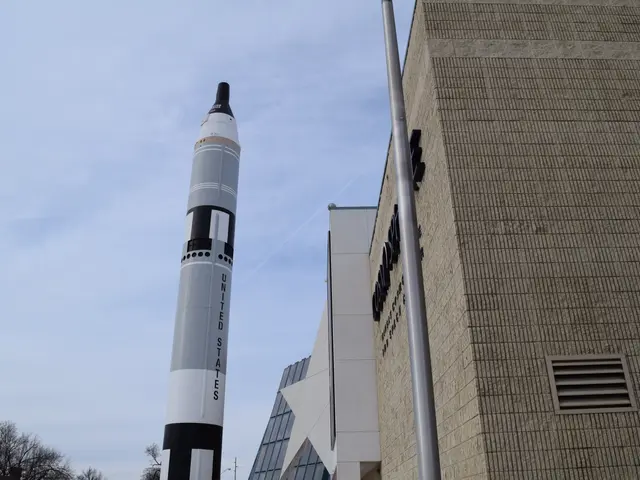Delving into the Technical Aspects of Art: Unraveling the Mysteries of Render Farms in Virtual Art Production
Render farms, a crucial component in the world of digital content creation, have been making waves in various industries, from gaming and virtual reality (VR) to film and animation. These powerful computing systems enable the creation of immersive and realistic experiences by handling complex rendering tasks that would otherwise be time-consuming and resource-intensive.
The Power of Render Farms
A typical render farm consists of servers, processors (CPUs/GPUs), and rendering software. These systems are designed to address the challenges in rendering complex scenes by distributing the workload across multiple servers, thereby reducing rendering times and allowing artists to focus more on creative aspects.
Artificial intelligence (AI) and machine learning are set to revolutionize rendering processes further. By optimizing algorithms, predicting rendering times, and improving output quality, these technologies promise to make render farms even more efficient and accessible.
Local versus Cloud-Based Render Farms
Render farms come in two main types: local and cloud-based. Local render farms are physically located within the studio or company premises, offering full control over hardware, software, and security. However, setting up a local render farm requires substantial investment in hardware and infrastructure, and scalability is limited by physical hardware capacity.
On the other hand, cloud-based render farms utilize cloud infrastructure, offering a pay-as-you-go model that enables studios to scale resources according to project demands without significant upfront investments. This model is ideal for independent artists, small teams, and studios needing burst capacity or flexible resources.
The advantages and disadvantages of local versus cloud-based render farms can be summarized as follows:
Local (On-Premise) Render Farms
Advantages: - Full control over hardware, software, and security since the servers are owned and operated by the studio or artist. - No reliance on internet speed or stability for transferring large files to external servers. - Potentially better suited for large studios or teams with consistent, high-volume rendering needs.
Disadvantages: - Requires significant upfront capital investment to purchase, install, and maintain high-performance hardware. - Ongoing costs include hardware upgrades, electricity consumption, cooling systems, and routine maintenance. - Scalability is limited by physical hardware capacity; upgrading can be slow and costly. - Can slow workflow if rendering demands exceed local capacity or deadlines are tight.
Cloud-Based Render Farms
Advantages: - Scalable compute power: access to thousands of high-end CPUs and GPUs on demand, enabling much faster rendering times. - Operates on a pay-per-use or subscription model, so no large upfront investment or hardware maintenance costs. - Frees up local machines for other creative tasks since rendering happens remotely. - Easy integration with popular 3D software and plugins; user-friendly dashboards for job monitoring. - Ideal for independent artists, small teams, and studios needing burst capacity or flexible resources.
Disadvantages: - Requires uploading potentially large files, which depends on internet bandwidth and may introduce latency. - Possible concerns about data security and confidentiality when using third-party cloud providers. - Ongoing operational expense, which, for very high volume or continuous usage, might become costly over time. - Dependency on external service availability and internet connectivity.
In conclusion, large studios with constant rendering needs may benefit from local farms for full control, but most independent artists, small teams, and many studios prefer cloud rendering for cost-efficiency, scalability, and speed, especially under tight deadlines.
[1] The Advantages and Disadvantages of Local Render Farms [2] The Advantages and Disadvantages of Cloud-Based Render Farms [3] The Future of Render Farms: AI and Machine Learning [4] The Role of Render Farms in Virtual Reality and Augmented Reality [5] The Impact of Render Farms on the Film and Animation Industry
Gadget enthusiasts might take interest in the advancements in local and cloud-based render farms, as they revolutionize data-and-cloud-computing in the realm of technology. These sophisticated systems are increasingly equipped with AI and machine learning capabilities, enhancing their efficiency in handling complex rendering tasks.
Moreover, the integration of render farms with virtual reality (VR) and augmented reality (AR) is a significant development, as they collaborate to create immersive, gadget-driven experiences that have been making waves across various industries.




